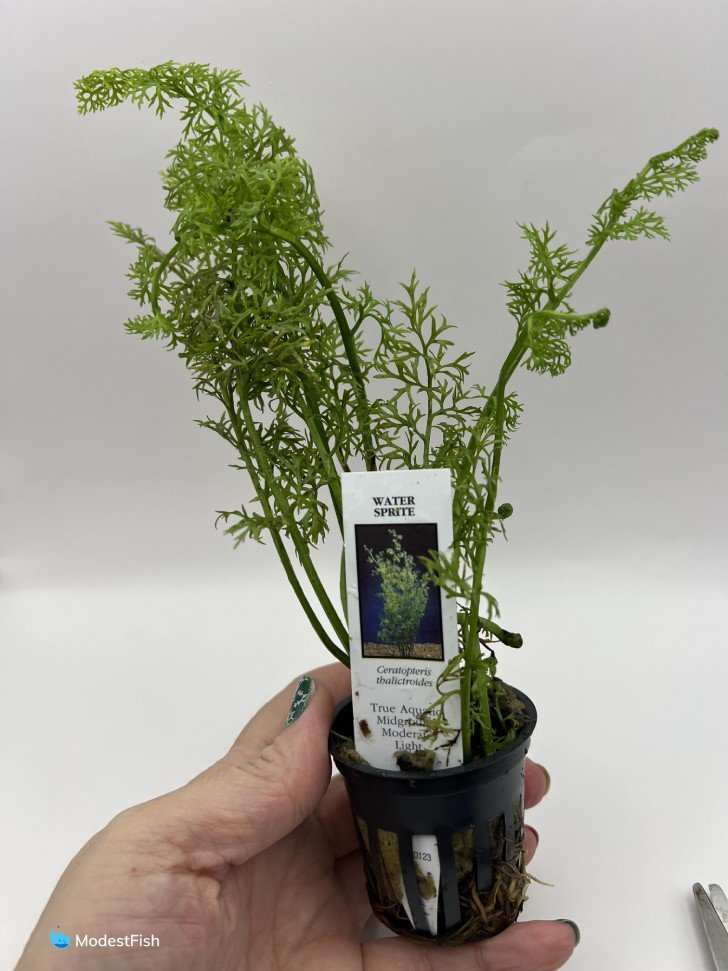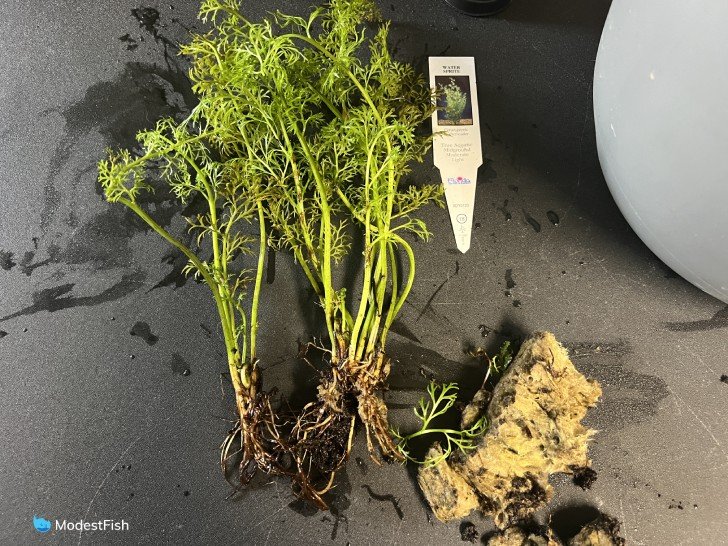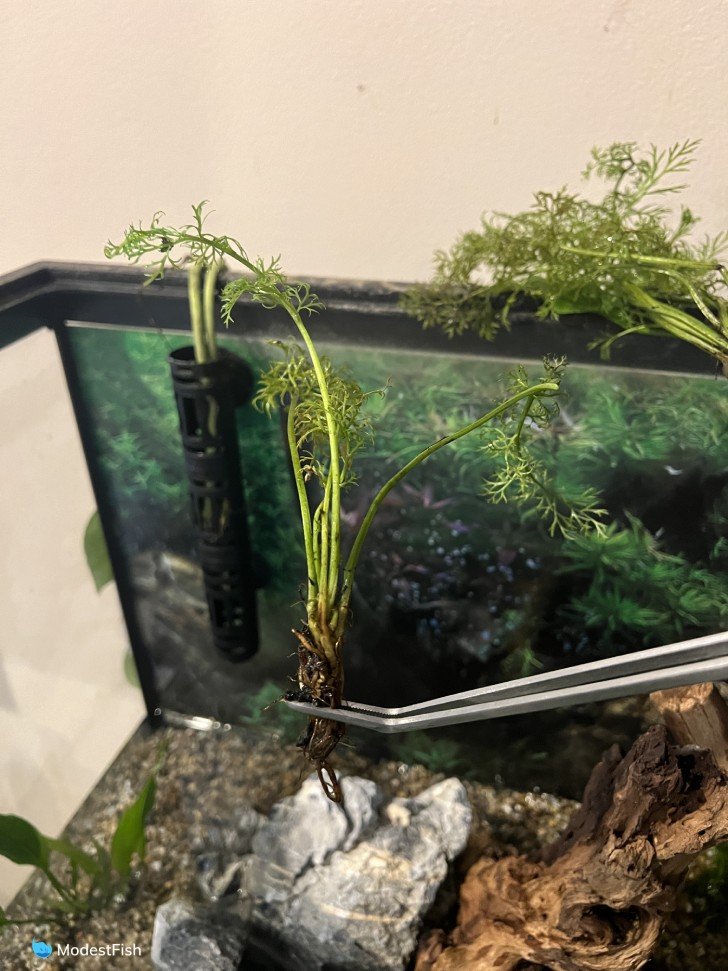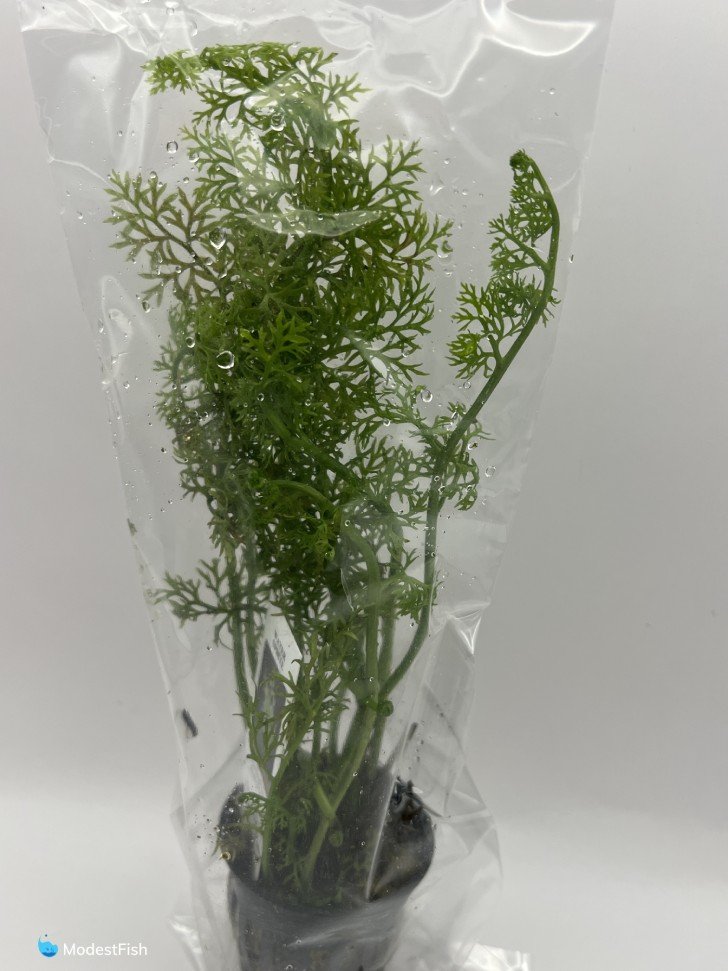Water sprite (Ceratopteris thalictroides) is one of the most popular choices for aquarium plants. From its lush green pigment to its versatile usage, it isn’t hard to see why it has such a vast distribution. In fact, you can find it on almost every continent.
But most prominent of all is how easy it is to care for it and its tolerance of enduring most freshwater aquarium conditions. It’s ideal for beginners.
In this guide, you’ll be walked through everything you need to know to successfully care for water sprite in your aquarium.
Quick Care Stats
- Scientific Name: Ceratopteris Thalictroides
- Family: Pteridaceae
- Order: Polypodiales
- Genus: Ceratopteris
- Care Level: Easy
- Growth Rate: Low to Moderate
- Maximum Size: 13.5 inches
- Water Conditions: 68-82°F, pH 6.0-7.5, KH 3-8
- Lighting: Medium to High (PAR 50-80)
- Propagation: Rhizome Division/Adventitious Plantlet
- Tank Placement: Mid to Background
Table of Contents
Overview of Water Sprite (Ceratopteris Thalictroides)

Water Sprite’s (Ceratopteris Thalictroides), is commonly referred to as Indian Fern and Water Fern, because of its bright green, finely divided leaves. It’s native to tropical regions including, parts of Africa, Asia, Australia, and the Americas. Is commonly found in flooded forests, swamps, ponds, and marches, among other water bodies with still or slow water.
Water sprite is a fast-growing stem plant and its leaves (fonds) grow in a rosette pattern extending outwards, giving it a complex intricate appearance in your aquarium. They don’t have extensive root systems, using them mainly as an anchor point and primarily feeding directly from your water column.

I think water sprite is best placed in the background or middle of your tank, where it’ll add a vibrant green touch, with the green of its stems tending to be darker than that of its leaves. I love how as it grows the leaves will intertwine and overlap in a beautiful pattern.
Water Sprite can handle most tank conditions, require little maintenance, and can be floating or planted. Making these plants are a popular choice for freshwater community tanks.
Water sprite is so easy to keep alive, I recommend it in my best plants for beginners article.
Water Sprite Aquarium Requirements

Here’s what you need to know about providing the ideal water conditions for your water sprite to thrive.
Tank Requirements
Personally, I wouldn’t recommend keeping water sprite in anything under 10 gallons. Simply because of how fast this plant grows and it can quickly over run your tank.
However, if you don’t mind frequent trimmings, having a smaller tank won’t cause the plant any issues.
Water Parameters
- Temperature: 68-82°F
- pH: 6.0-7.5
- GH: 3-19 dGH
- KH: 3-8 dKH
Lighting Conditions
For Water Sprite, lighting should range from medium to high (PAR 50-80) because it grows optimally in spots with good light exposure, enabling its leaves to get bigger, leveling up your tank’s aesthetic appeal.
Substrate & Fertilizers
Water Sprite is a hardy column-feeder, so you don’t need to worry about providing any kind of expensive aqua soil. Just your typical sand or gravel substrate will work just fine.
This is because a water sprite primarily feeds on nutrients in your tank’s water column. You only need to provide some all-in-one liquid fertilizer.
With all plants, added CO2 will improve growth, but you might not want that with water sprite as it grows so fast already.
Maintenance
For as great as water sprite is, I sometimes find it a bit of a pain when it comes to trimming. Especially in small tanks.
Water sprite grows really fast so you’ll need to regularly trim the outer stems, not the main stem originating directly from the roots. Next, remove the cut branches from the tank, or else they’ll start to grow roots and become new plants.
How to Plant Water Sprite: Plant or Float?
You can have a water sprite anchored in the substrate or floating.
Honestly, it can be a bit of a pain to keep water sprite from floating up after you plant. Personally, I like to bury the stem a couple inches into the substrate. If you are having issues with them floating, try placing some rocks around the base to weigh it down. It’ll eventually root itself in your substrate.


Otherwise, you can just float it. Simply immerse its stems in the water column. Gradually, it’ll grow roots, which will extend downwards. Then, the roots will help absorb nutrients through the water column.
I’ve found when floating water sprite, it tends to grow thicker leaves and longer thinner roots.
How to Propagate Water Sprite
Propagating water sprite is easy. You can actually do nothing and the water sprite will propagate all by itself. Plantlets will grow root systems and break off once ready.
Or if you want to do it yourself, just get some scissors and make a clean cut along the stem with a few inches of leaves, either replant or float it and you’re all done. If you float the cutting, after a few days or a week or so, you’ll start to see roots forming from the stem.
Aquascaping with Water Sprite
Water Sprite works best in the mid to background of a tank. However, the plant shouldn’t be in a direct water flow to avoid the breakage of leaves.
There are multiple uses and benefits to Water Sprite. Providing shade is one that we’ve already discussed, making it the perfect plant if you have shy fish, like Cherry Barbs, as they’ll find the ideal spot to hide.
In addition, the plant’s thin roots may trap leftover food, so shrimp can scour them and hide there. Furthermore, these leaves make for a perfect habitat for newborn fry and small fish. And, of course, we can’t forget how it keeps algae at bay.
Additionally, these plants benefit other plants and fish in your tank and also look stunning. The plant’s bright green leaves bring a livelihood to your freshwater community tank. And floating Water Sprite can create the most incredible leaf patterns too. So, if that’s a priority for you, perhaps floating would better suit your purposes.
How to Choose Healthy Water Sprite

When buying Water Sprite, keep an eye out for a few red flags if you don’t want to get stuck with a sick or dying plant. Healthy water sprite is green with slightly darker stems. You don’t want one with yellow or brown leaves.
Needless to say, avoid plants with leaves that have holes, cuts, or tears or that can’t stand straight or support their weight. Finally, watch out for water sprite with short and few roots.
Tank Mates for Water Sprite
Water sprite are good aquarium plants for most community tanks, benefiting fish and plants in one way or another, including shy fish, shrimp, and small fry and fish.
As a rule, water sprite is compatible with most peaceful fish species, including killifish, mollies, platies, bettas, guppies, corydoras, and glass catfish.
Goldfish are a big no-no in a tank with water sprite, as they won’t hesitate to eat them.
As for its compatibility, water sprite gets along very well with many plants, including Java Fern, Hornwort, and Anacharis.
Is Water Sprite Right For You
Water sprite is an excellent choice for pretty much any type of aquarium. It requires no special attention. Just plant or float and dose with an all-in-one liquid fertilizer.
When using this plant in my tanks, I notice a clear positive influence on my water parameters as it loves to eat up nitrates. Water sprite is a tough, resilient plant ideal for beginners and experienced aquarium keepers.
The only issue you’ll face with this plant is how often you have to trim it.
